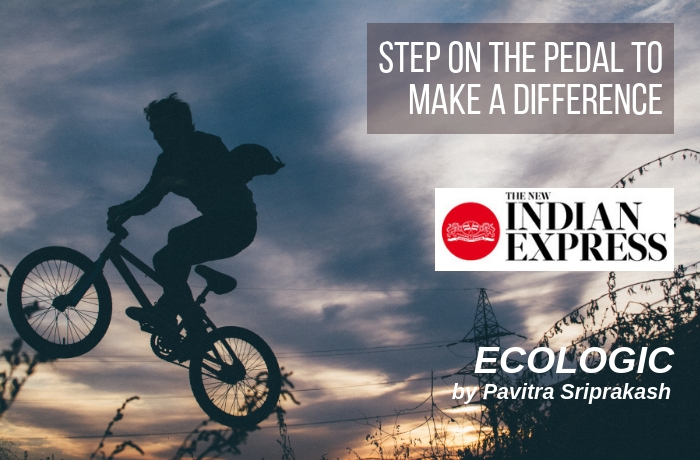17-Nov-2018, Pavitra Sriprakash, Director and Chief Designer, Shilpa Architects Planners Designers Pvt. Ltd, in her weekly column on Sustainability, writes about “health and other benefits of riding bikes”.
Click here to read the article on The New Indian Express Site, or read the full article below. As always, we look forward to your feedback and suggestions. You can reach Ar. Pavitra Sriprakash at studio@shilpaarchitects.com.
Step on the pedal to make a difference
Biking is good for you and the environment — While the number of cycling enthusiasts increase in our cities, I have always wondered on what the true benefits of cycling can be for an urban population. At least 30 minutes of moderate-intensity physical activity each day is recommended for adults to be fit, even if the exercise is broken up into short 10-minute bursts. Short rides are the only ones that are possible for getting to work, school or a small neighborhood errand given our hot sticky weather across the country. Yet these short rides are a convenient and practical way to incorporate regular exercise into a busy day.
The second less-understood reason is the environment. Given that riding a bike requires no fossil fuels and is a pollution free mode of transport it is a no brainer that it is an eco-friendly way to move around. But also, bikes reduce the need to build, service and dispose off cars.
The infrastructure needed for bikes to move are relatively inexpensive, have less paved areas and can almost be considered a part of the city’s green belt. So apart from saving the atmosphere from 1,000’s of KG’s of greenhouse gas emissions in a year, riding a bike will also impact the overall infrastructure in a city and help congestion of vehicles on a road. In contrast to mass transit like light rail, the built infrastructure is also minimal and less energy consuming to get in place.
The third positive impact through riding bikes, is on society at large. Bicycles are more affordable to run. While only 10% of the world’s population can afford a car, an estimated 80% of people can afford a bike. It offers increased mobility to many groups of the population with low rates of car ownership, such as low income earners, unemployed people, seniors and those under 18 years of age.
The one aspect that does require focus amid all of this of course is safety of cyclists on Indian roads. Recent statistics by the Ministry of Road Transport and Highways’ annual report on road accidents shows that while the number of accidents dropped across the country, the number of accidents involving pedestrians and cyclists is on the rise.
As with any planning that is required for transportation, cycling infrastructure, too, needs a lot of thought in its design. From providing connections for transport and leisure, bike trails in our cities will need to be designed as part of every ‘smart city’ initiative going forth. Shared cycling facilities also create benefits for pedestrians and people with disabilities by providing an increased network of paths and improved road crossings. More bikes in a neighbourhood provide a safer road environment with slower traffic making it less dangerous for children and seniors as well. So the next time there is even a small opportunity to cycle somewhere, do it — it is good in more ways for more than you can think.



